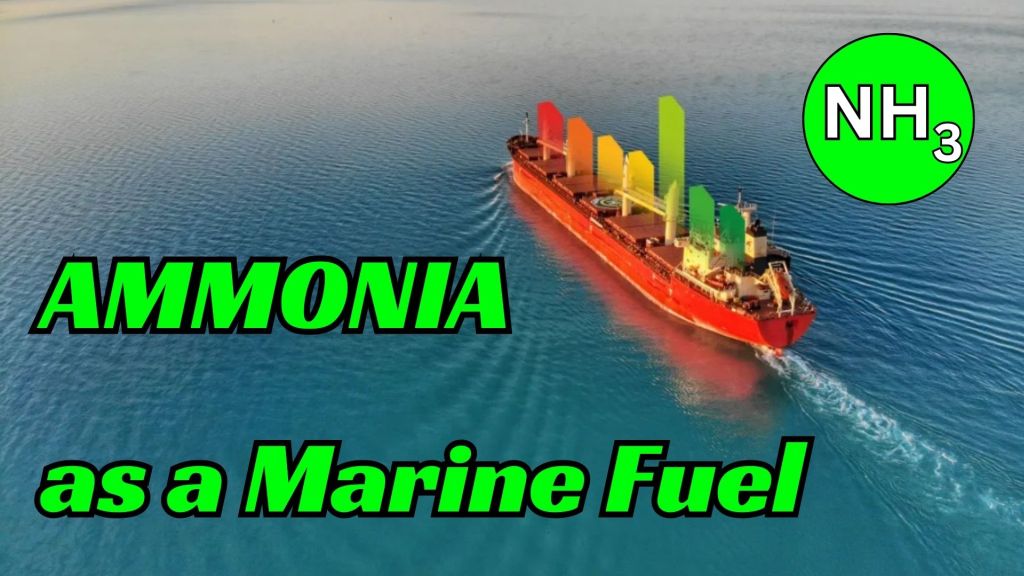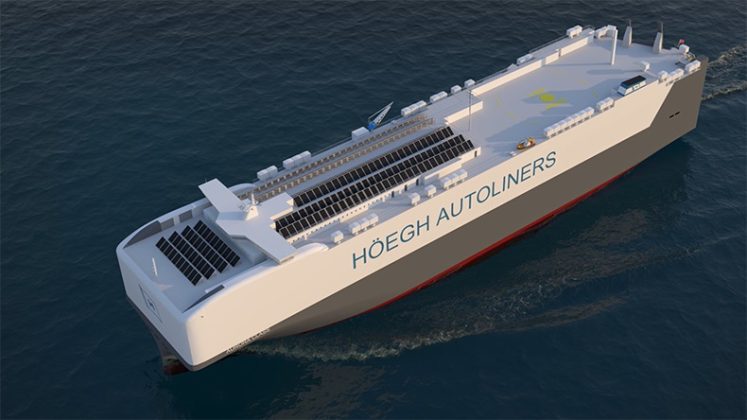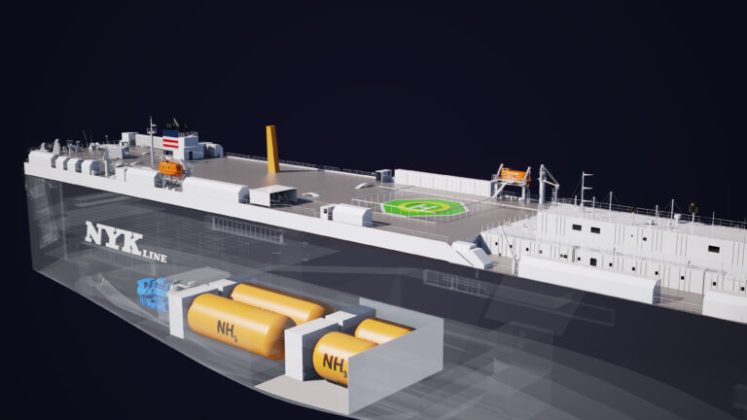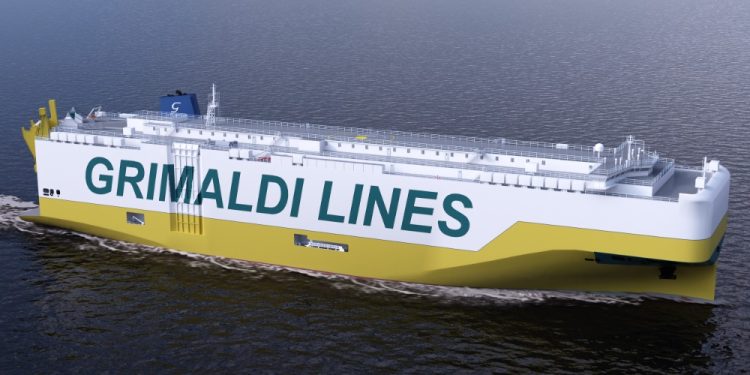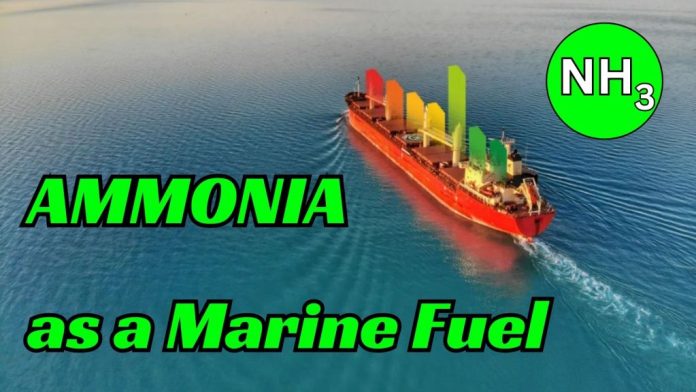
(www.MaritimeCyprus.com) The challenge of maritime decarbonisation is not that it is happening, but that it needs to happen so quickly. There is a need for industry wide understanding of the operational and safety challenges surrounding the use of ammonia as a marine fuel for its adoption as part of the maritime energy transition.
What is it? NH3
Ammonia is a commonly produced industrial chemical. At ambient temperature and pressure, ammonia is a clear, colourless gas that is lighter than air. It can be absorbed in water and is corrosive, with potential for serious injury to eyes, throat and lungs. It has a distinctive pungent odour.
About 70% of current ammonia production is for the fertiliser industry (World Economic Forum, 2022) and it is seen as a critical resource for global food security. More than half of currently available ammonia is produced in four countries (China, the US, India and Russia), using hydrogen formed from natural gas and coal, then combined with nitrogen separated from the air using electricity. The hydrogen production processes, coal gasification (26%) and steam methane reforming (73%), account for the majority of the CO2 emitted during ammonia production today.
Production of ammonia currently emits 450 Mt of CO2 per year, representing 1.3% of man-made emissions, the largest source of emissions in the chemical sector. While its demand from existing uses of ammonia continues to grow, new applications of ammonia as an efficient hydrogen carrier and a carbon-free fuel are set to make the most impact on demand. Global demand is expected to increase from 183 Mt in 2020 to 688 Mt in 2050. Of this new demand, less than half will be from existing uses, with 197 Mt expected from the maritime sector alone. A further 127 Mt will come the use of ammonia as a hydrogen carrier, supplying decarbonised feedstock and fuel for the chemical and industrial sectors (IRENA, 2022).
Decarbonisation efforts in sectors that already use ammonia products are adding pressure for production to become greener. There are two methods for producing the hydrogen used in the creation of clean ammonia. The first involves the use of fossil feedstocks and applying carbon capture and utilisation techniques. The second method involves using electrolysis to extract hydrogen from water, which is a cleaner alternative to reforming or gasifying hydrogen from coal or natural gas. Hydrogen from either source is combined with nitrogen extracted from the air, using the Haber-Bosch process. To produce green ammonia, renewable electricity is required for both electrolysis and for combining hydrogen with nitrogen.
Applicability
Where combustion fuel is concerned, ammonia is rising to prominence as a long-term choice. Challenges are still being worked through but supposed ‘deal-breakers’ are quickly being surmounted, with the first ammonia-powered ships due to hit the water in 2025.
In terms of technology, engine-makers such as Wärtsilä, MAN Energy Solutions and WinGD have all reported significant progress in ammoniacapable marine engines in the past year. Bolstered by successful testing programmes and the concurrent development of fuel supply and safety mitigation systems, newbuild engines and retrofits (enabling existing engines to run on ammonia fuel) look set for commercial availability from 2025. Some pilot projects are already in operation.
Readiness of ammonia as a marine fuel
Lloyd’s Register has collaborated with industry stakeholders to build a comprehensive assessment of different aspects of the fuel supply chain from production to delivery onboard, and the technologies for use as a fuel onboard for power generation.
General safety and toxicity issues
Ammonia can be found naturally in the air, soil, water and in our bodies. It is also an ingredient in household cleaners and other household products. However, it can cause irritation and burning of the skin, mouth, throat, lungs and eyes. High levels can severely damage the lungs and lead to death. The level of harm depends on concentration and duration of exposure. Ambient ammonia vapour is lighter than air, however when compressed ammonia is released, the liquid flash evaporates, causing a heavier-than-air vapour cloud.
Recommendations
- Lowering storage temperature to reduce the safety risk from ammonia fuel
- Dividing the fuel preparation room into two or more separate spaces containing different groups of equipment that could leak ammonia
- Minimising, monitoring, and controlling access to, and length of time spent, in spaces containing ammonia equipment
- Placing ventilation outlets from spaces containing ammonia equipment in a safe location, adequately separated from areas accessed by crew, to avoid accidental release of toxic concentrations of ammonia affecting personnel
- Installation of multiple sensors of different types to detect ammonia leaks
Ship operator demand and interest
Interest in ammonia as a fuel for shipping is driven both by its potential as a zero- or near-zero emissions fuel and by its anticipated increasing role in the world economy as an efficient, transportable energy carrier. As the world looks towards the hydrogen economy to decarbonise industry, the properties of ammonia make it more suitable to trading across oceans. And as more ships begin to carry ammonia, more will become candidates for using it as fuel. Ammonia’s growth in maritime can therefore be separated into two streams: increasing demand for ocean transportation from gas carriers, some of which will use the cargo as a fuel; and increasing demand specifically as a bunker fuel for non-gas carrying vessels.
Summary
In 2023, engine-makers began revealing their final designs. Shipbuilders will soon be able to complete and install these engines in frontrunner orders. Simultaneously, there is ongoing development in ammonia fuel supplies, with shipping companies securing offtake deals to ensure they have access to a steady supply of net-zero ammonia.
As with other low carbon intensity fuels, pricing of renewable electricity, green hydrogen and carbon capture will all play into ammonia fuel pricing calculations. Clean ammonia producers, whether those creating new plants or incumbent manufacturers seeking to upgrade production to create blue and green ammonia, see potential in increased demand from agriculture and other sectors, as well as from shipping. This will put pressure on supply.
Another key element in ammonia deployment will be the lifecycle assessment of the fuel source to ensure vessels are fully capable of remaining compliant in an uncertain regulatory landscape. Future carbon pricing remains a key determinant in the use of any low-carbon fuel, including ammonia. Production costs remain high and the fuels have lower energy density compared to conventional fuel oils.
LR has proven it has the credentials to support companies pioneering ammonia as a fuel in the field. These include detailed HAZID, HAZOP and quantitative risk assessments, as well as several approvals in principle for vessel designs and technologies and significant technical rule development. As a fuel-agnostic and safety-oriented organisation, LR’s aim
is to assist in the development of a safe framework for the adoption of the ammonia cargo market and for ammonia’s use of other fuels.
There are significant safety challenges to the wider maritime use, and carriage of, ammonia. By taking steps to develop this framework today, LR aims to rigorously address these challenges and avoid delay to the use of a potentially valuable fuel option for decarbonising industry and shipping.
Challenges notwithstanding, demand for oceanic transport of green ammonia as an energy carrier continues to grow. Projections indicate that a significant proportion of the world’s merchant fleet will, in the long term, benefit from the use of ammonia as fuel – delivering the first carbon-free power source for global shipping since the (first) age of sail ships.
For more details, download below the comprehensive report by LR "Fuel for Thought: AMMONIA":
Source: Lloyd's Register

For more Guidance papers and research on Ammonia as a Maritime Fuel, click HERE





